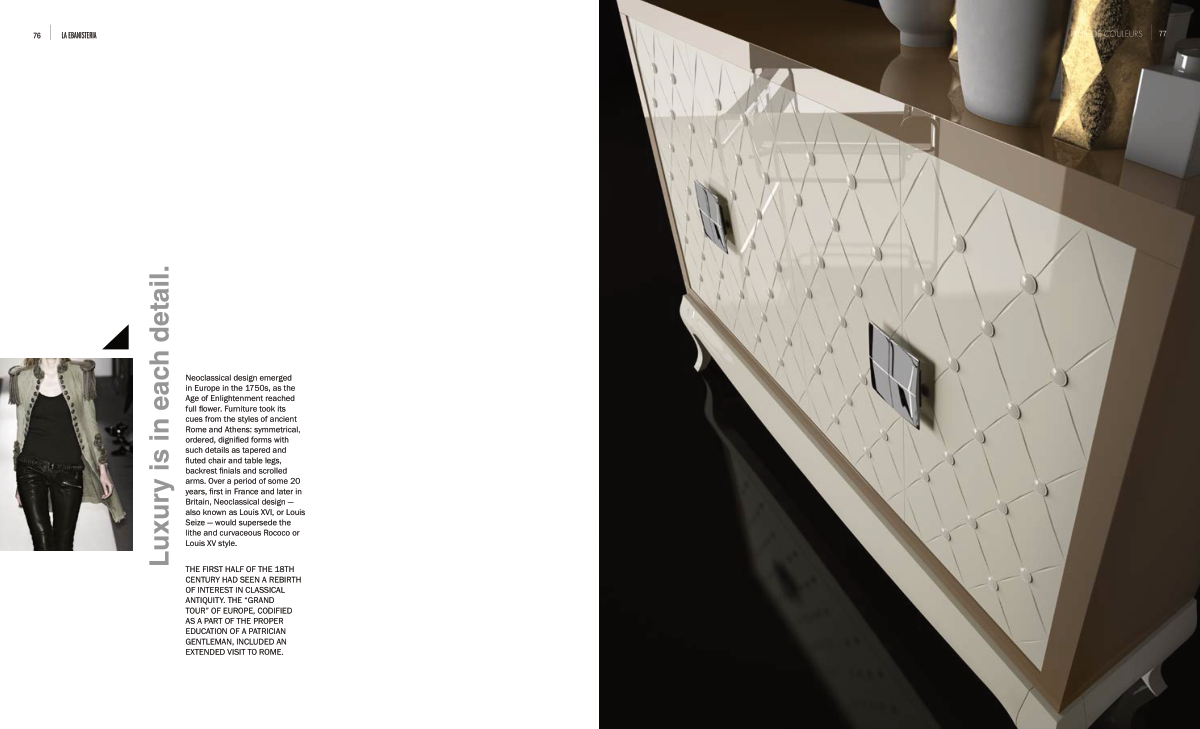Neoclassical design emerged
in Europe in the 1750s, as the
Age of Enlightenment reached
full flower. Furniture took its
cues from the styles of ancient
Rome and Athens: symmetrical,
ordered, dignified forms with
such details as tapered and
fluted chair and table legs,
backrest finials and scrolled
arms. Over a period of some 20
years, first in France and later in
Britain, Neoclassical design —
also known as Louis XVI, or Louis
Seize — would supersede the
lithe and curvaceous Rococo or
Louis XV style.
THE FIRST HALF OF THE 18TH
CENTURY HAD SEEN A REBIRTH
OF INTEREST IN CLASSICAL
ANTIQUITY. THE “GRAND
TOUR” OF EUROPE, CODIFIED
AS A PART OF THE PROPER
EDUCATION OF A PATRICIAN
GENTLEMAN, INCLUDED AN
EXTENDED VISIT TO ROME.
76 LA EBANISTERIA
PLUIE DE COULEURS
77
Luxury is in each detail.


